The ideal moment to begin dog training is as early as possible, preferably when the dog is still a puppy, around 8 to 12 weeks old. During this stage, puppies are more receptive to learning and are forming their first impressions of the world around them.
Starting early allows the dog to learn good behaviors and avoid developing undesirable habits. Additionally, adult dogs can also be successfully trained.
While they may take longer to learn compared to puppies, with patience and appropriate techniques, they too can develop good habits and obey commands. The important thing is to be consistent and reinforce positive behaviors, regardless of age.
1. Positive Reinforcement for Dog Training

Positive reinforcement is a well-known and effective technique in dog training. It is based on rewarding the dog whenever it does something right, such as sitting or coming when called.
These rewards can be treats, toys, or even praise. The crucial aspect is for the dog to understand that by obeying, it gains something good. Over time, the dog begins to associate the correct behavior with the reward and starts to repeat it.
This technique is great because it builds a trusting relationship between the owner and the dog. The dog learns with patience and enthusiasm, always anticipating a reward.
However, it is important not to overdo the treats to avoid harming the animal’s health. Alternating with praise and affection can help maintain balance and ensure continuous learning in dog training.
2. Clicker Training

Clicker training is widely used in dog training and involves a small device that emits a sound when pressed. Whenever the dog does something right, you use the clicker and then offer a reward. This specific sound helps the dog quickly understand what you want from it, as it associates the click with the correct behavior.
Over time, the dog starts to respond naturally to the sound of the clicker. This makes dog training easier and the learning process more efficient. Using the clicker is simple, but it requires consistency so that the dog correctly associates the sound with the desired behavior.
Furthermore, the clicker can be used anywhere, allowing owners to train their dogs in various environments, contributing to more robust learning.
An additional benefit of clicker training is that it can be easily combined with other training techniques, such as positive reinforcement. By using the clicker along with rewards, owners can further strengthen the association between the desired behavior and the reward.
This integrated approach not only enhances the effectiveness of training but also provides a richer and more dynamic learning experience for the dog.
3. Basic Commands (Sit, Lie Down, Stay)
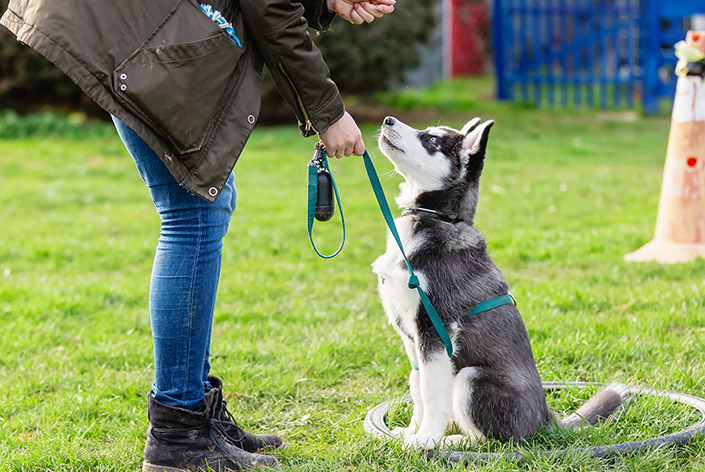
Teaching commands like “sit,” “lie down,” and “stay” is fundamental in dog training. They help maintain control over the animal and serve as the basis for teaching it other skills. To teach these commands, use short, clear words, accompanied by a reward whenever the dog obeys.
Over time, the dog will understand the commands and obey without hesitation. It is essential to repeat training sessions daily but without overwhelming the animal. Short sessions of 10 to 15 minutes are more effective and ensure that the dog remains motivated throughout the dog training process.
Incorporating different environments and distractions during training can also help the dog learn to obey in any situation, reinforcing obedience in various contexts.
Another useful strategy is to practice commands at times of the day when the dog is naturally calmer, such as after a walk or play session. This allows the dog to focus better and make the most of the training sessions.
Reinforcing these commands in various everyday situations, such as during walks or mealtime, can also help solidify the learning and applicability of the commands in daily life.
4. Crate Training

Crate training is widely used in dog training and involves using a crate to teach the dog to feel secure in a limited space. Initially, the dog may be hesitant, but with patience, it will come to understand that the crate is a safe and comfortable place. This technique is often used to train dogs not to make a mess when left alone.
Additionally, the crate can be a great ally in teaching the dog not to destroy furniture or objects. When used correctly, crate training helps establish a routine for the dog, teaching it to have rest moments in its own space.
Another advantage of crate training is that it provides a safe location for the dog during travel or visits to unfamiliar places, where the animal may feel anxious or insecure.
It is essential to introduce the crate gradually and positively, allowing the dog to explore the space before spending long periods inside. This can be done by offering treats or toys inside the crate to create a positive association.
Moreover, the crate should never be used as a form of punishment, as this can lead to negative associations and increase the animal’s anxiety, making training even more challenging.
5. Socialization
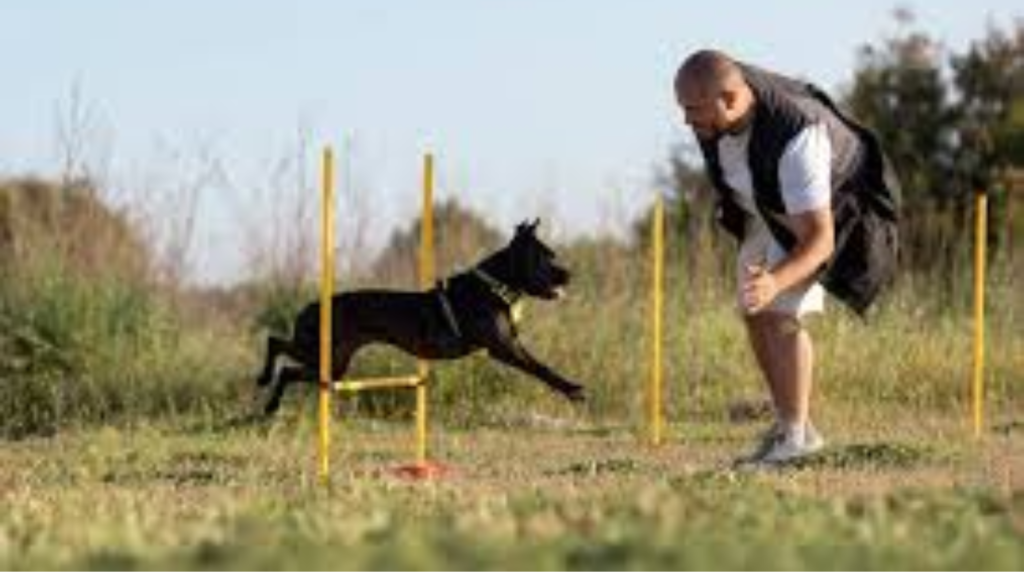
Socialization is a crucial part of dog training, as it helps the animal adapt to different environments, people, and other animals. This means gradually exposing the dog to new situations so that it learns to behave appropriately.
Well-socialized dogs tend to be more balanced and less likely to develop fears or aggressive behaviors. A dog that is socialized from an early age is more confident and has fewer behavioral problems in the future.
In addition to being an important part of dog training, socialization also helps the animal feel more comfortable in social situations, making interactions more pleasant for everyone.
It is ideal to start socialization when the dog is a puppy, but even adult dogs can benefit from being introduced to new experiences in a controlled manner.
Group training classes are a great way to promote socialization, as they allow dogs to interact with each other under the supervision of their owners. This helps develop important social skills, such as managing excitement and understanding interaction norms with other dogs.
Additionally, exposing the dog to different environments, sounds, and situations can help it become more adaptable and less anxious in new circumstances.
6. Lure-and-Reward Method

In the Lure-and-Reward method, widely used in dog training, you use something the dog likes, such as a treat, to guide it to perform a specific action.
For example, hold a treat near the dog’s nose and move it upward so that it raises its head and sits. As soon as the dog does what you want, reward it with the treat.
This method is ideal for teaching basic commands and simple tricks. Dog training using Lure-and-Reward is effective because the dog quickly understands what is expected of it, without frustrations, making learning more enjoyable for the animal.
Additionally, consistency is key for the dog to correctly associate the movement with the desired action, thereby reinforcing the correct behavior.
An additional advantage of the Lure-and-Reward method is that it can be adapted to different contexts and commands. Once the dog learns to respond to a specific command using the treat as a guide, you can start using fewer visible rewards while keeping the dog motivated and focused.
This helps promote a gradual transition to verbal command training, while the dog continues to associate the correct action with a positive outcome.
7. Leash Training
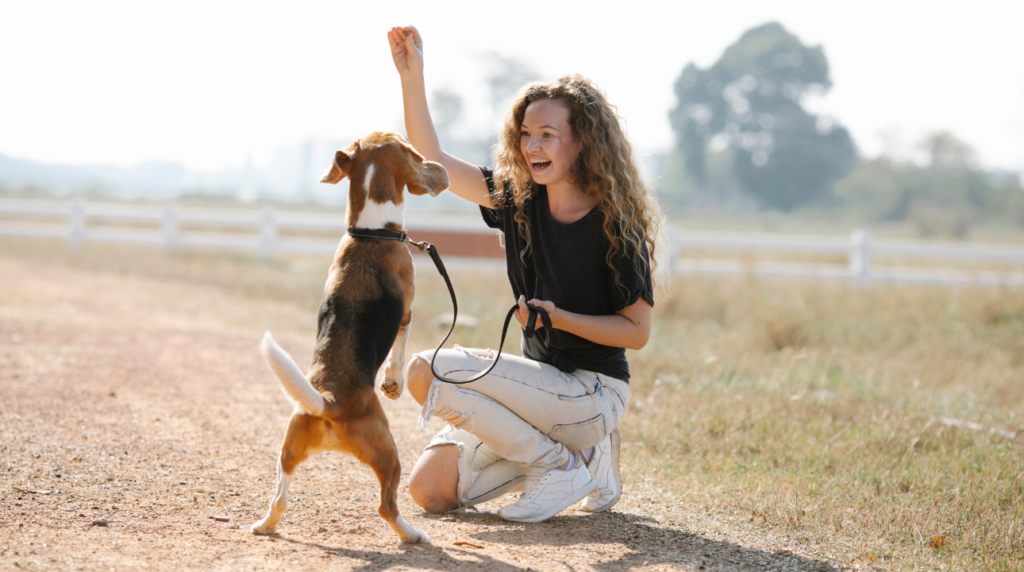
Advanced dog training is an extension of basic training and involves teaching the dog more complex skills. This may include commands such as “shake,” “roll over,” or even more elaborate tricks, like fetching objects.
To achieve these goals, it is crucial for the dog to have a solid foundation of previous training.
It is important to keep advanced training fun and challenging. Dog training should not be a chore, but rather an enriching experience.
Handlers should ensure that training sessions are short but frequent to prevent the dog from getting bored. Additionally, it is helpful to alternate between different types of tricks to keep the dog’s motivation high and promote continuous learning.
An effective technique in advanced dog training is introducing new commands and tricks in varied environments. This helps the dog generalize what it has learned and apply its skills in different situations.
Encouraging the dog to learn through interactive games or challenges can also promote a deeper and more dynamic learning experience, increasing the confidence and connection between the dog and the handler.
8. Extinction Method
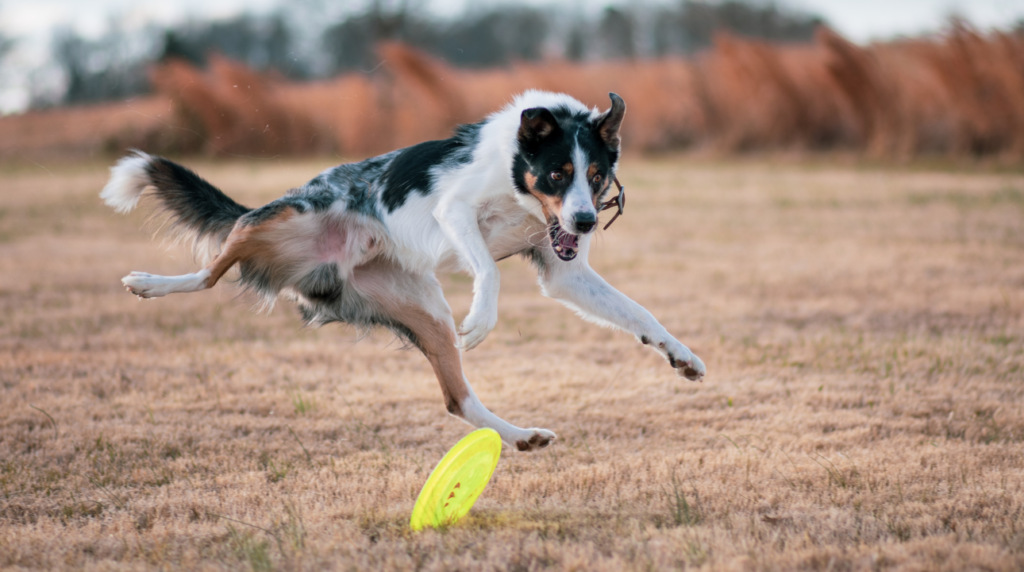
During the dog training process, it is normal to encounter some common problems. Among the most frequent are the dog’s lack of focus, disobedience, and unwanted behaviors. It is crucial to understand that these behaviors are part of the learning process and can be overcome with patience and strategy.
An important approach is to identify what causes the dog’s distraction and try to minimize these interferences during training. Additionally, it is essential to ensure that the dog is in a calm environment without external distractions.
If the problem persists, considering the help of a professional trainer may be a good option. They can provide guidance and specific solutions for the challenges the handler is facing, making dog training easier.
Another common issue is the handler’s frustration, which can lead to a negative environment during training sessions. It is important to remember that each dog has its own learning pace.
Celebrating small achievements and maintaining a positive attitude can make a significant difference in the animal’s motivation. Positive reinforcement and recognizing the dog’s progress help build a relationship of trust and respect, which is fundamental for successful dog training.
9. Recall Training-Dog training
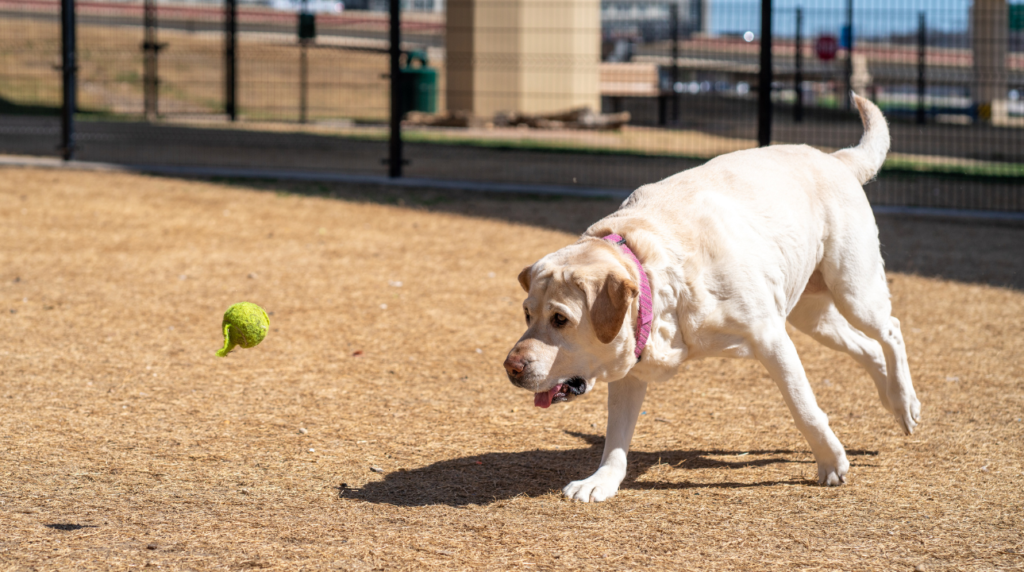
To ensure effective dog training, it is crucial to maintain consistency in training techniques. This means using the same commands and rewards whenever the dog responds to a command.
Repetition and predictability are essential for the dog to understand what is expected of it, facilitating the learning process.
Another important point is patience. Each dog has its own learning pace and may take time to master a new command. Avoiding frustration is key to keeping the dog motivated and willing to learn.
If necessary, taking breaks during training can help prevent the dog from feeling overwhelmed or stressed.
Additionally, celebrating small successes can boost the dog’s confidence and strengthen the relationship between the handler and the animal. This can be done through verbal praise or special rewards whenever the dog achieves a goal.
Finally, varying dog training sessions by including games and challenges can make the process more fun and engaging for both the handler and the dog.
10. Hand Signal Training-Dog training

Physical exercise is essential for a dog’s well-being and plays an important role in education. Dogs that exercise regularly tend to be calmer and less prone to destructive behaviors.
This is because physical activity helps release accumulated energy, allowing the dog to be more focused and receptive during training sessions.
Additionally, regular exercise can also improve the dog’s mental health, reducing anxiety and stress. Handlers should incorporate daily walks, interactive play, and even activities that stimulate hunting instincts, such as fetching objects or toys.
These activities not only keep the dog fit but also provide opportunities for learning and socialization.
Integrating exercise into the dog training routine can be highly beneficial. This may include using toys to engage the dog during training, keeping it active and engaged.
By combining training with physical activity, handlers can maximize the dog’s learning while promoting a healthy and balanced lifestyle.
With these techniques, dog training can become a positive experience for both the owner and the dog, fostering a harmonious and happy coexistence.
What is the ideal age to start training?
- Many wonder when is the best time to begin training a dog, whether it should start as a puppy or if it is effective for adult dogs.
Which training methods are the most effective?
- There are various approaches, such as positive reinforcement, clicker training, and punishment-based methods. Which is the most recommended?
How do I deal with unwanted behaviors?
- Many people want to know how to correct problematic behaviors, such as excessive barking, destructive chewing, or aggression.
How many training sessions are needed per day?
- There is a common question about the duration and frequency of training sessions and how many minutes per day should be dedicated to training.
Can dogs learn more than one command at a time?
- Owners often wonder if it is effective to teach multiple commands in a single session or if they should focus on one at a time.
What is the importance of socialization in training?
- Many question how socializing a dog with other animals and people relates to the success of training and if it is necessary.
